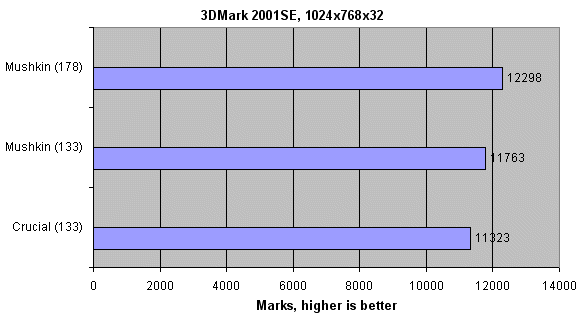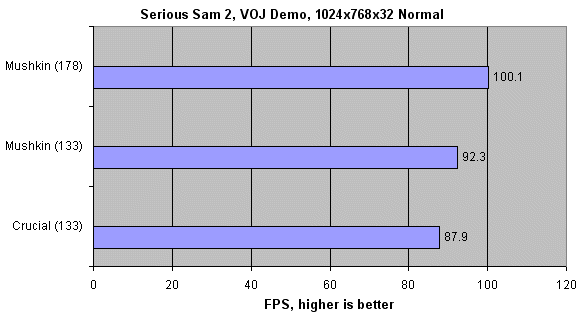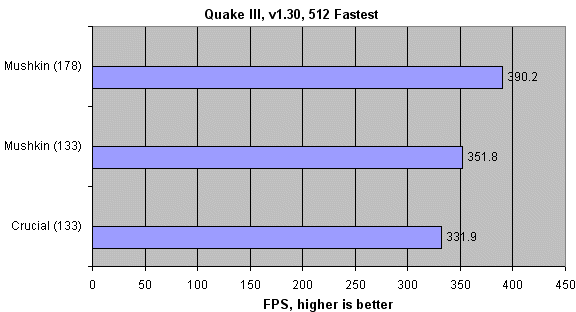Benchmarks II
We've witnessed that timings do make a significant difference in our benchmarks thus far. Raising the memory clock to 178MHz gives us a further performance boost. Remember, the CPU clock has remained constant throughout. Do we see the same kind of performance gains from timings and faster memory speeds as we switch towards gaming ?. Let's find out as we benchmark 3DMark 2001SE at its default resolution.

Just to reiterate, the Crucial memory is
running at 133MHz with 2.5-6-3-3 timings. The Mushkin runs at 133MHz with
2-5-2-2 timings (hence the increased performance), and it also runs at
178MHz with 2-5-2-3 timings (asynchronous to the 133 P4 FSB). The
processor remains at a constant 2800MHz. If you want to see just how the
differing memory timings at 133FSB translate into an extra 430 marks, head
over here
How about Serious Sam, The Second
Encounter. Settings are 1024x768x32 Normal preferences for the Valley of
the Jaguar Timedemo. I deliberately choose this demo as it stresses the
system RAM heavily. Again, tighter timings produce greater
performance. Jumping up to 178MHz memory gives us 100+ FPS. One of the best tests of sheer system
throughput has to be Quake III. I'll benchmark it at 512 Fastest to see
just what effect the tighter timings, that the Mushkin allows, have on
performance. A difference of around 20 FPS when we
simply tighten the memory timings, impressive. We get another 40 FPS as
we raise the Mushkin memory clock to 178MHz by use of a 3:4 CPU:RAM ratio.










